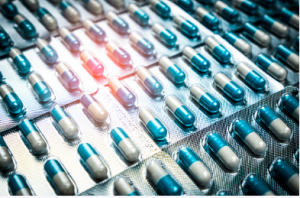If you want a plastic medicine bottle that can withstand the elements and keep its colour and shape but is also kid-proof and an excellent option for a refillable salt and pepper shaker, look no further than the wide-mouth design of this plastic bottle. It will not leak, and it can be filled and dispensed easily. Plus, the bottle is resistant to mould, mildew, and rotting.
 Avoid
Avoid
Most people are familiar with pharmaceuticals, which significantly contribute to many medical problems. They can help reduce inflammation and betas, among other things. However, they also produce an environmental impact. Learn about Pharmpac PET packaging.
There are plenty of reasons to recycle your prescription bottles. The Environmental Protection Agency estimates that a typical prescription bottle takes 20 to 30 years to degrade. As such, it’s wise to get it done right the first time.
Among other things, the most popular prescription bottle is one made from polypropylene. It’s also the best material to reuse, which is why you’ll find many prescription reuse programs around town. In addition, if you have an empty bottle, you can take it to your local pharmacy for recycling.
One of the simplest ways to recycle your prescription bottle is to go to your local pharmacy. You can also opt for a pill bottle shredding service. While a service might sound like a pain, it’s the safest way to ensure you’re properly disposing of your meds. For instance, if you forget to dispose of your pills, you’re in for hefty fines. So if you’re on the fence about whether or not you should throw your old meds away, try a plethora of pill reuse programs before you make a final decision.
Wide mouth design for easy filling and dispensing
There is no doubt that wide-mouthed glass bottles are a thing of beauty. They are not only elegant, but they are also practical and functional. Amongst other things, they are great for storing water, acetone, or cleaning solutions. As such, they are often found in kitchens and laundries. And they are bulk packed, making handling and storing such products a breeze.
Fortunately, the bottle above is a cinch to fill. In addition, the bottle features a no-drip spout and a large capacity that will last for a long time. Besides, the beverage is made of high-density polyethylene (HDPE), which is durable and chemically resistant. Furthermore, its one-piece construction makes assembly a breeze.
The best part is that you will not have to go through the hassle of assembling a complex assembly. Moreover, it also holds a whopping fifty-four eight-ounce servings of your favourite brew. You can easily transport it to and fro without needing a trip to the nearest Starbucks. It is, therefore, an excellent choice for a busy office or home. To top it off, it comes in various colours, including a white variant for light-sensitive pharmaceuticals.
Child-proof
You want a child-proof cap when you need a new plastic medicine bottle. The cap protects kids from poisoning by preventing children from removing the lid.
The cap is made of pressure-sensitive material, which automatically seals the product. A smaller circle on the top of the lid fits inside the bottle’s opening. It allows adults to measure out the proper dose without removing the cap.
Child-proof caps are required for many products. In addition, they are essential for long-term storage. Learn about Pharmpac PET packaging.
The CPSC, the Consumer Product Safety Commission, is responsible for enforcing regulations related to child-proof packaging. Standard products like vitamins and pharmaceuticals are subject to these guidelines.
Child-resistant bottles have been a lifesaver for thousands of young people. They have reduced the risk of accidental poisoning by 45%. But child-proof packaging still needs to be foolproof. Other factors need to be considered.
Some of the most important are the weight, design, warning label, and warnings. In addition, you need to be sure the packaging is professionally tested. If the package has not been thoroughly tested, it may not meet the CPSC’s standards.
Choose a child-proof plastic medicine bottle if you want an affordable solution to keep your medicines safe. The bottle has a wide mouth, making it easy to fill and dispense.
Non-leaching
It may be surprising to learn that many plastic products contain harmful chemicals. While many are relatively harmless, others can be hazardous to human health. This article briefly overviews some of the most commonly found chemicals in plastic.
One of the most common is bisphenol A, commonly known as BPA. This chemical is used to manufacture polycarbonate bottles and other plastic containers. Earlier research found that exposure to BPA may hurt the brains of infants and can lead to other adverse health effects over time.
Another commonly used chemical is high-density polyethylene or HDPE. This chemical is known for its good tensile strength and weather-resistant properties. Many products made with HDPE are resistant to mildew and mould. However, this material is also not environmentally friendly.
As you might imagine, this plastic type is unsuitable for recycling. In addition, it can be toxic to the environment. Fortunately, there are several alternatives to this standard plastic. For example, glass is a more eco-friendly choice.
Some plastics, such as polystyrene, can also leach harmful compounds. Luckily, many products are designed to prevent such chemicals from escaping into the air or getting into your food.

